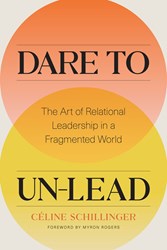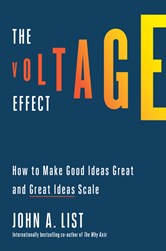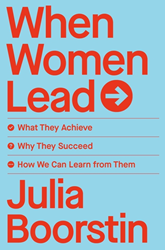Inside the 2022 Longlist | Leadership & Strategy
December 13, 2022
Our Managing Director Sally Haldorson calls upon a short story of Raymond Carver's to help us understand why it seems so impossible, and why it's so important, to talk about leadership.
In 1981, Raymond Carver published his third book of short stories called What We Talk About When We Talk About Love. That title (of the book and its titular story) was not Carver’s but the product of Carver’s editor, Gordon Lish, and was extracted from the following scene: during an afternoon of gin drinking with his wife and another couple, the main character of the story pontificates, “[I]t ought to make us ashamed when we talk like we know what we’re talking about when we talk about love.”
Carver originally titled his story “Beginners,” and for all the beatings Lish has received over the years for taking a sword rather than a scissors to Carver’s work, What We Talk About When We Talk About Love is without a doubt a more memorable title, catchy as a pop song lyric. The phrasing of the title questions the language we use to approximate love, while the sentence in the story is written slightly differently, emphasizing not the “what” we talk about, but the “how” we talk about it. It captures the inherent impossibility of talking about love at all, regardless of the language at hand.
Why all this talk about love? Because, surprisingly, it illustrates how we struggle to talk about leadership. For three quarters of a century, we have been trying to define leadership, make a study of it, find a common language for it. We’ve made an industry of trying to identify the guaranteed traits of what makes a good leader. Most scholars and experts acknowledge that leadership is conceptually slippery and easily influenced by current trends or those with the loudest microphone. Ralph Stogdill, who may have originated the study of leadership with an early 1948 survey of its literature, wrote in the first edition of his Handbook of Leadership; a Survey of Theory and Research (1974), that “[t]he qualities, characteristics, and skills required in a leader are determined to a large extent by the demands of the situation in which he is to function as a leader.” So, leadership, is, at its worst, unstable and prone to misuse, but, at its best, ever evolving and progressing as we progress.
The tension in Carver’s story, at its very base level, is that everyone talks about their experiences with and understanding of love in paradoxical, and sometimes alarming, ways. Similarly, if leadership is also inherently relative, then how can we not only talk more collectively about it but also set standards for the “qualities, characteristics, and skills” that make good leaders? Like love, what we want leadership to be and what it actually turns out to be are sometimes very different things, creating a gap between intention and execution, expectation and actualization. The shape-shifting nature of leadership and the conditions within which it is practiced demand that we constantly seek new ways to talk effectively about it all. Because leadership, like love, can never be allowed to become stagnant or self-satisfied.
And that’s what the following titles, our top five Leadership & Strategy books for 2023, do so well. They expand the lexicon we have for leadership, push the boundaries of our past assumptions, and challenge us to be bold in our ideas––so that we, as leaders, can better respond to the challenges of an ever-evolving world. Talking about leadership is hard, but important. Just like love, at its heart, leadership is people. And between people lies a relationship. And every meaningful relationship, no matter the kind, is full of vulnerability and hope and ledge-walking. More than reason enough to keep talking about what we talk about when we talk about leadership.

 Anti-Racist Leadership: How to Transform Corporate Culture in a Race-Conscious World written by James D. White with his daughter, Krista White, charges corporate leaders “who are in a position of power and privilege” to take responsibility for the initiation and implementation of a diversity, equity, and inclusion improvement plan in their companies. White calls for leaders to lead reform rather than relegate the work to a special department or affinity group, a quick-fix expense to be trimmed from the budget the minute times get tight. White, the former CEO of Jamba Juice, contends that unless the change is CEO-driven, DEI efforts will not take root and those self-same corporate leaders who neglected to build a more inclusive corporate culture will hamstring their company’s ability to maximize growth and resilience. Easier said than done, White acknowledges: “Of course, a large percentage of CEOs and board members are not comfortable having this conversation. … We’ve never had conversations about structural and systemic racism in the workplace before. It’s doubly uncomfortable if you’re a corporate leader who’s always considered it your job to have all the answers.” And even if the conversations are had, leaders must walk the talk and operationalize the changes. What’s the solution? Commit to a multi-year plan that acknowledges first that change takes time. Incorporate your DEI plan into your whole business strategy, not as a separate add-on. Incentivize the efforts of managers to implement the change. Build an ecosystem within which these efforts can thrive. And most importantly, start in a place of humility and openness because “change is going to happen only when we’re willing to do things that are uncomfortable and inconvenient.” White provides leaders with an actionable blueprint so that even in discomfort, leaders can feel confident in creating a “workplace that includes the best minds for a multicultural, multisegmented world.”
Anti-Racist Leadership: How to Transform Corporate Culture in a Race-Conscious World written by James D. White with his daughter, Krista White, charges corporate leaders “who are in a position of power and privilege” to take responsibility for the initiation and implementation of a diversity, equity, and inclusion improvement plan in their companies. White calls for leaders to lead reform rather than relegate the work to a special department or affinity group, a quick-fix expense to be trimmed from the budget the minute times get tight. White, the former CEO of Jamba Juice, contends that unless the change is CEO-driven, DEI efforts will not take root and those self-same corporate leaders who neglected to build a more inclusive corporate culture will hamstring their company’s ability to maximize growth and resilience. Easier said than done, White acknowledges: “Of course, a large percentage of CEOs and board members are not comfortable having this conversation. … We’ve never had conversations about structural and systemic racism in the workplace before. It’s doubly uncomfortable if you’re a corporate leader who’s always considered it your job to have all the answers.” And even if the conversations are had, leaders must walk the talk and operationalize the changes. What’s the solution? Commit to a multi-year plan that acknowledges first that change takes time. Incorporate your DEI plan into your whole business strategy, not as a separate add-on. Incentivize the efforts of managers to implement the change. Build an ecosystem within which these efforts can thrive. And most importantly, start in a place of humility and openness because “change is going to happen only when we’re willing to do things that are uncomfortable and inconvenient.” White provides leaders with an actionable blueprint so that even in discomfort, leaders can feel confident in creating a “workplace that includes the best minds for a multicultural, multisegmented world.”
 In Dare to Un-Lead: The Art of Relational Leadership in a Fragmented World, Céline Schillinger boldly calls for the radical deconstruction of our historical and hierarchical assumptions about leadership. This isn’t a superficial cultural or moral critique of leaders’ clay feet. Instead, Schillinger, an engagement leadership consultant, reveals how the established and archaic mythology of leadership hurts us all. “Leadership … becomes a badge of honor, a status, rather than something fluid, contextual, enabling, and active.” When leaders position themselves above or distinct from others, they become isolated, elitist, inclined to make uninformed decisions based on individualist bravado or bias rather than collective wisdom or co-intelligence. As a result, this “obsolete leadership … creates and maintains dysfunctional work environments.” And in those environs, employees are confined by “[o]rganizational belief systems, performance pressures, and time constraints [that] inhibit our critical thinking, limiting our ability to question and challenge.” To instead build a collective culture “that truly encourages action, risk-taking, autonomy, and accountability,” leaders must “learn to let go and replace control with trust.” Owing to her native country of France, Schillinger introduces readers to a refreshing new vocabulary with which to rethink how we think about leadership. And, sometimes, to break us out of old habits, new words are just the trick. She writes, “Leadership is broken. But it doesn’t have to be that way. We can transform leadership through three core values: those of Liberty, Equality, and Fraternity.” Liberty (companies benefit by emancipating employees from unnecessary organizational suppression, allowing for limitless creativity due to a greater sense of agency and ownership); Equality (companies thrive when employees experience a culture in which all ideas and all contributions are seen and accorded the same respect and value); and Fraternity (companies are more resilient when nurturing a sense of unity and collectivity, of humanity, of creating change through communal action.) Equal parts radical and practical, the impassioned yet deeply researched Dare to Un-Lead will challenge everything you think about leadership, expanding both your vocabulary and your vision.
In Dare to Un-Lead: The Art of Relational Leadership in a Fragmented World, Céline Schillinger boldly calls for the radical deconstruction of our historical and hierarchical assumptions about leadership. This isn’t a superficial cultural or moral critique of leaders’ clay feet. Instead, Schillinger, an engagement leadership consultant, reveals how the established and archaic mythology of leadership hurts us all. “Leadership … becomes a badge of honor, a status, rather than something fluid, contextual, enabling, and active.” When leaders position themselves above or distinct from others, they become isolated, elitist, inclined to make uninformed decisions based on individualist bravado or bias rather than collective wisdom or co-intelligence. As a result, this “obsolete leadership … creates and maintains dysfunctional work environments.” And in those environs, employees are confined by “[o]rganizational belief systems, performance pressures, and time constraints [that] inhibit our critical thinking, limiting our ability to question and challenge.” To instead build a collective culture “that truly encourages action, risk-taking, autonomy, and accountability,” leaders must “learn to let go and replace control with trust.” Owing to her native country of France, Schillinger introduces readers to a refreshing new vocabulary with which to rethink how we think about leadership. And, sometimes, to break us out of old habits, new words are just the trick. She writes, “Leadership is broken. But it doesn’t have to be that way. We can transform leadership through three core values: those of Liberty, Equality, and Fraternity.” Liberty (companies benefit by emancipating employees from unnecessary organizational suppression, allowing for limitless creativity due to a greater sense of agency and ownership); Equality (companies thrive when employees experience a culture in which all ideas and all contributions are seen and accorded the same respect and value); and Fraternity (companies are more resilient when nurturing a sense of unity and collectivity, of humanity, of creating change through communal action.) Equal parts radical and practical, the impassioned yet deeply researched Dare to Un-Lead will challenge everything you think about leadership, expanding both your vocabulary and your vision.
 In Unreasonable Hospitality: The Remarkable Power of Giving People More than They Expect, restauranteur and hospitality expert Will Guidara achieves something quite remarkable in this age of knee-jerk ideological dichotomies—he demonstrates the capacity to hold two contrasting ideas in his hand at once and refuse to choose between the two. Instead of compartmentalizing ideas into either/or, he does the hard thing by pushing himself, his team (at the famous New York City restaurant Eleven Madison Park), and us to face up to the challenge of engaging with both/and. As Guidara asserts, “Simple is Hard.” And he shows that what most leaders think are conflicting ideas—generosity and frugality; intentionality and spontaneity; refinement and experiment; process and intuitiveness—when held together, make for a richer product and experience for customers and a more satisfying and inspiring work experience for leaders and employees. Guidara centers on one such diametrical pairing: “Hospitality and excellence. Those two concepts? They’re not friends. It’s easy to have a sweet culture of hospitality if you’re not going to be maniacal about precision and detail.” But in Guidara’s hands, it’s a conceptual mountain he’s most excited to climb and show us the route, one paved with innovation. He tells us, “We would need to explore that contradiction and embrace it—integrating two opposing ideas and embodying both simultaneously.” The arc of Guidara’s engaging and readable book follows the restaurant’s pursuit of the top spot in the World’s 50 Best Restaurants, and to achieve that goal, Guidara and his partner had to deconstruct many of the assumed components of the restaurant experience—menus, coat checks, reservations, repeatability—and create something wholly new. “I wanted to improvise, one guest at a time. Everyone at our restaurant on a given night was sharing a unique experience—but what if everyone in the restaurant could have their own unique experience? … I wanted to give as many of them as possible the gift of delight—the surprise that comes from being truly seen and heard.” Unreasonable Hospitality shows us that when we are willing to challenge everything we assume to be true about our business, we learn just how spacious the boundaries around what’s possible truly can be.
In Unreasonable Hospitality: The Remarkable Power of Giving People More than They Expect, restauranteur and hospitality expert Will Guidara achieves something quite remarkable in this age of knee-jerk ideological dichotomies—he demonstrates the capacity to hold two contrasting ideas in his hand at once and refuse to choose between the two. Instead of compartmentalizing ideas into either/or, he does the hard thing by pushing himself, his team (at the famous New York City restaurant Eleven Madison Park), and us to face up to the challenge of engaging with both/and. As Guidara asserts, “Simple is Hard.” And he shows that what most leaders think are conflicting ideas—generosity and frugality; intentionality and spontaneity; refinement and experiment; process and intuitiveness—when held together, make for a richer product and experience for customers and a more satisfying and inspiring work experience for leaders and employees. Guidara centers on one such diametrical pairing: “Hospitality and excellence. Those two concepts? They’re not friends. It’s easy to have a sweet culture of hospitality if you’re not going to be maniacal about precision and detail.” But in Guidara’s hands, it’s a conceptual mountain he’s most excited to climb and show us the route, one paved with innovation. He tells us, “We would need to explore that contradiction and embrace it—integrating two opposing ideas and embodying both simultaneously.” The arc of Guidara’s engaging and readable book follows the restaurant’s pursuit of the top spot in the World’s 50 Best Restaurants, and to achieve that goal, Guidara and his partner had to deconstruct many of the assumed components of the restaurant experience—menus, coat checks, reservations, repeatability—and create something wholly new. “I wanted to improvise, one guest at a time. Everyone at our restaurant on a given night was sharing a unique experience—but what if everyone in the restaurant could have their own unique experience? … I wanted to give as many of them as possible the gift of delight—the surprise that comes from being truly seen and heard.” Unreasonable Hospitality shows us that when we are willing to challenge everything we assume to be true about our business, we learn just how spacious the boundaries around what’s possible truly can be.
 The Voltage Effect: How to Make Good Ideas Great and Great Ideas Scale by John A. List isn’t a traditional leadership book, but then, we’ve agreed to dispense with the traditional boundaries on leadership by now, right? Yes, List is an economist, and yes, The Voltage Effect is a book about behavioral economics. But it’s also a book about decision-making and execution and growth. “To succeed at scale, it’s not always about the who that matters. It’s the what and the how—what decisions you make, and how you carry them out.” And the what and the how is the business of every leader. Each new initiative starts by identifying and backing the right idea. The right idea is one that can gain and sustain energy under current conditions. Because leaders don’t lead in a vacuum, those conditions include considerations about human behavior and the behavior of markets, about which List is an expert. “Whether you’re scaling for profit, social impact, better health or educational outcomes, or anything else, the goal should be to engineer incentives that tap into our highly social and loss-averse brains to nudge people toward the behaviors that will benefit everyone involved.” Buy-in matters; the more people who plug into an idea increases voltage. This is a new term in this context—voltage—but it’s energizing and accurate. Ideas need sustained power to have impact and gain reach. List does warn that there are pitfalls in attempting to scale. He calls it a “fragile concept” and offers five elements that will cause “voltage drops and prevent an idea from taking off” as well as practices to insure voltage gains. List uses relevant case studies like the Covid-19 response to illustrate just how critical it is to get scaling right: “Scaling the response to Covid-19 has, indisputably, produced voltage gains. But it has also been rife with voltage drops.” List is a terrific teacher of complex economic concepts that can assist leaders in generating effective strategies and more reliable growth outcomes, which is, in his words, “the only way to meaningfully change the world, at scale.” Exactly what every leader sets out to do.
The Voltage Effect: How to Make Good Ideas Great and Great Ideas Scale by John A. List isn’t a traditional leadership book, but then, we’ve agreed to dispense with the traditional boundaries on leadership by now, right? Yes, List is an economist, and yes, The Voltage Effect is a book about behavioral economics. But it’s also a book about decision-making and execution and growth. “To succeed at scale, it’s not always about the who that matters. It’s the what and the how—what decisions you make, and how you carry them out.” And the what and the how is the business of every leader. Each new initiative starts by identifying and backing the right idea. The right idea is one that can gain and sustain energy under current conditions. Because leaders don’t lead in a vacuum, those conditions include considerations about human behavior and the behavior of markets, about which List is an expert. “Whether you’re scaling for profit, social impact, better health or educational outcomes, or anything else, the goal should be to engineer incentives that tap into our highly social and loss-averse brains to nudge people toward the behaviors that will benefit everyone involved.” Buy-in matters; the more people who plug into an idea increases voltage. This is a new term in this context—voltage—but it’s energizing and accurate. Ideas need sustained power to have impact and gain reach. List does warn that there are pitfalls in attempting to scale. He calls it a “fragile concept” and offers five elements that will cause “voltage drops and prevent an idea from taking off” as well as practices to insure voltage gains. List uses relevant case studies like the Covid-19 response to illustrate just how critical it is to get scaling right: “Scaling the response to Covid-19 has, indisputably, produced voltage gains. But it has also been rife with voltage drops.” List is a terrific teacher of complex economic concepts that can assist leaders in generating effective strategies and more reliable growth outcomes, which is, in his words, “the only way to meaningfully change the world, at scale.” Exactly what every leader sets out to do.
 When Women Lead: What They Achieve, Why They Succeed, How We Can Learn from Them by Julia Boorstin. At last, we have a book about women business leaders that isn’t a book about encouraging aspiring and qualified women to crack the glass ceiling, take a seat at the table, lean in, lean out, go big, or do it all in pursuit of the as-of-yet unattainable. Instead, Julia Boorstin, a CNBC correspondent and journalist, interviewed 120 women who have already been working in leadership roles, and she brings their voices together as a powerful unified narrative and methodology. It’s a subtle distinction, but an important one: this book is not about the striving, it’s about the having achieved. It’s not about what if?, it’s about what’s next? Never before have we had so many women who can talk with established authority about their leadership experience, and Boorstin asserts that it’s time we begin to draw lessons from their successes. Because the majority of writing about leadership has historically reflected the male experience, as men have been the assumed authority in business and society, this focus on what common traits make women leaders successful and distinct has been a long time in coming. “What’s been most striking to me is that there is a vast gulf between the traditional idea of good leadership and the traits that actually contribute to good leadership,” she writes. And some of those new approaches emphasize listening, empathy, adaptability and vulnerability—all traits that build organizational resilience. Boorstin’s research is wide-reaching: we meet women leaders we know (the few voices that have rung out over the last two decades, like Sarah Blakely and Gwyneth Paltrow), but unique to this book, we get to meet a whole range of lesser-known CEOs, start-up stars, and government change agents who offer the first real sense of the breadth and range of work that women are doing in the top tier. Of course, there is still work to do, and Boorstin is realistic: “The women profiled in this book are, by definition, exceptions. They are the winners in a brutal and unfair game with rules that have been etched deep into the playbook of our society.” Still, the collective voice of the women in leadership continues to grow, is amplified by books such as Boorstin’s, and has changed the way we talk about leadership. It’s a very welcome addition indeed.
When Women Lead: What They Achieve, Why They Succeed, How We Can Learn from Them by Julia Boorstin. At last, we have a book about women business leaders that isn’t a book about encouraging aspiring and qualified women to crack the glass ceiling, take a seat at the table, lean in, lean out, go big, or do it all in pursuit of the as-of-yet unattainable. Instead, Julia Boorstin, a CNBC correspondent and journalist, interviewed 120 women who have already been working in leadership roles, and she brings their voices together as a powerful unified narrative and methodology. It’s a subtle distinction, but an important one: this book is not about the striving, it’s about the having achieved. It’s not about what if?, it’s about what’s next? Never before have we had so many women who can talk with established authority about their leadership experience, and Boorstin asserts that it’s time we begin to draw lessons from their successes. Because the majority of writing about leadership has historically reflected the male experience, as men have been the assumed authority in business and society, this focus on what common traits make women leaders successful and distinct has been a long time in coming. “What’s been most striking to me is that there is a vast gulf between the traditional idea of good leadership and the traits that actually contribute to good leadership,” she writes. And some of those new approaches emphasize listening, empathy, adaptability and vulnerability—all traits that build organizational resilience. Boorstin’s research is wide-reaching: we meet women leaders we know (the few voices that have rung out over the last two decades, like Sarah Blakely and Gwyneth Paltrow), but unique to this book, we get to meet a whole range of lesser-known CEOs, start-up stars, and government change agents who offer the first real sense of the breadth and range of work that women are doing in the top tier. Of course, there is still work to do, and Boorstin is realistic: “The women profiled in this book are, by definition, exceptions. They are the winners in a brutal and unfair game with rules that have been etched deep into the playbook of our society.” Still, the collective voice of the women in leadership continues to grow, is amplified by books such as Boorstin’s, and has changed the way we talk about leadership. It’s a very welcome addition indeed.
















